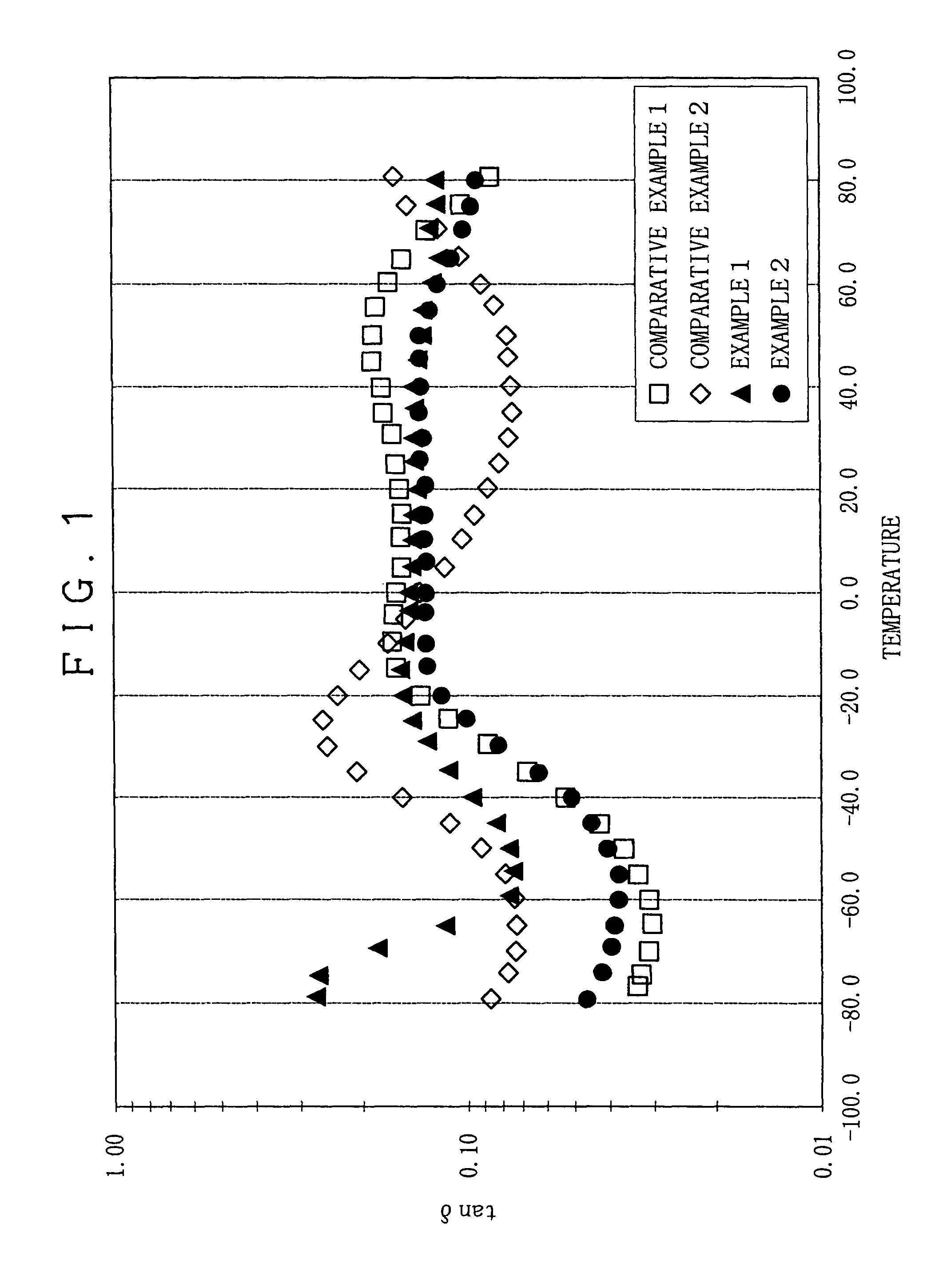Shoe sole component
a technology of soles and components, applied in the field of sole components, can solve the problems of deteriorating cushioning properties, excessive softening of cross-linked foam, deteriorating mechanical strength of cross-linked foam, etc., and achieves good cushioning properties, good cushioning properties, and unlikely to be excessively softened
- Summary
- Abstract
- Description
- Claims
- Application Information
AI Technical Summary
Benefits of technology
Problems solved by technology
Method used
Image
Examples
example 1
[0155]90 parts by weight of ethylene-α-olefin copolymer (manufactured by Mitsui Chemicals, Inc., “TAFMER” DF110), and 10 parts by weight of styrene-butadiene-butylene-styrene copolymer (SBBS) (manufactured by Asahi Kasei Chemicals Corporation, “TUFTEC” P1000) were put into a sealing type kneader (kneader) heated to 100° C. to 150° C., and were melt kneaded for 6 to 10 minutes at 40 rpm. Then, a given amount of each of a foaming agent, a cross-linking agent and a processing material was added into the melt kneaded subject by using an open roll heated to 100° C. to 120° C., and they were dispersion kneaded for about 8 to 15 minutes. Thus, a resin composition was obtained. 500 to 600 g of this resin composition was filled in a mold having a length of 150 mm, a width of 150 mm and a thickness of 20 mm, and press-molded for 30 to 35 minutes under a pressure of 15 MPa. Thus, a cross-linked foam was prepared.
[0156]For a cross-linked foam to be served for measurement of dynamic viscoelastic...
example 16
[0171]81 parts by weight of ethylene-α-olefin copolymer as the first resin component PE1 (manufactured by Mitsui Chemicals, Inc., Trade Name “TAFMER”, DF110), 10 parts by weight of adhesive TPO as the first resin component PE2 (manufactured by Mitsui Chemicals, Inc., Trade Name “Admer PF508”), and 9 parts by weight of styrene butadiene butylene styrene copolymer (SBBS) (manufactured by Asahi Kasei Chemicals Corporation, “TAFTECK” P2000) were put into a sealing type kneader heated to 100° C. to 150° C., and were melt kneaded for 6 to 10 minutes at 40 rpm. Then, a given amount of each of a foaming agent, a cross-linking agent and a processing material was added into the melt kneaded subject by using an open roll heated to 100° C. to 120° C., and dispersion kneaded for about 8 to 15 minutes. Thus, a resin composition was obtained. 500 to 600 g of this resin composition was filled in a mold having a length of 150 mm, a width of 150 mm and a thickness of 20 mm, and press molded under a p...
PUM
| Property | Measurement | Unit |
|---|---|---|
| frequency | aaaaa | aaaaa |
| tan δ | aaaaa | aaaaa |
| specific gravity | aaaaa | aaaaa |
Abstract
Description
Claims
Application Information
 Login to View More
Login to View More - R&D
- Intellectual Property
- Life Sciences
- Materials
- Tech Scout
- Unparalleled Data Quality
- Higher Quality Content
- 60% Fewer Hallucinations
Browse by: Latest US Patents, China's latest patents, Technical Efficacy Thesaurus, Application Domain, Technology Topic, Popular Technical Reports.
© 2025 PatSnap. All rights reserved.Legal|Privacy policy|Modern Slavery Act Transparency Statement|Sitemap|About US| Contact US: help@patsnap.com

